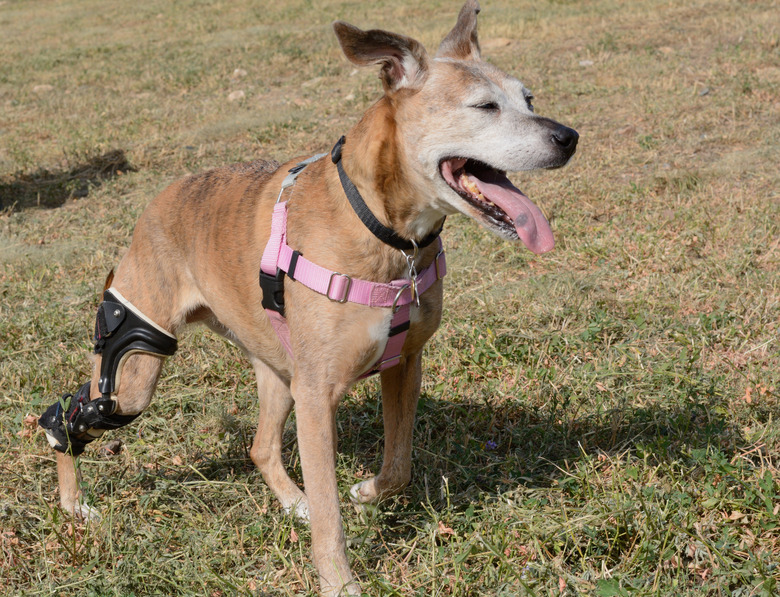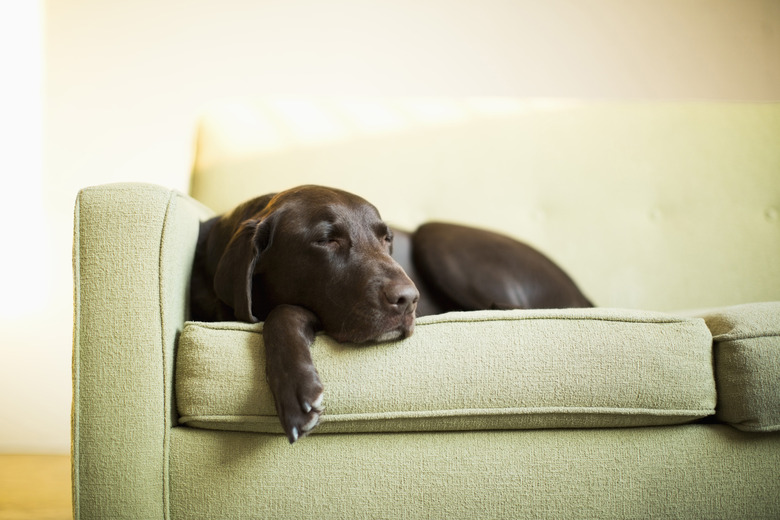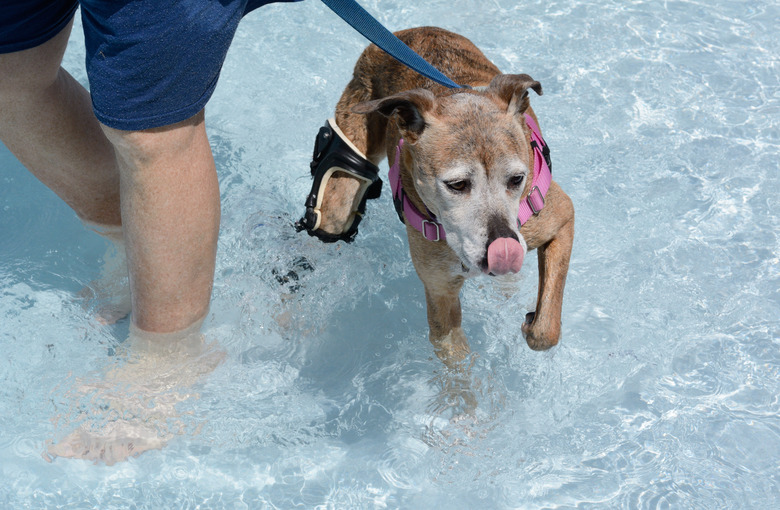Torn Hock Ligament In A Dog
Your dog may be pure joy in motion when she leaps in the air to catch a Frisbee or runs to retrieve a stick. Keeping your dog active can keep your dog from developing obesity or other health problems, but at the same time, dogs can run the risk of a dog hock injury.
Dog hock anatomy
Dog hock anatomy
Although it is not common, one possible hind leg injury in dogs is tearing a muscle or ligament in the hock, which is similar to a human ankle. The hock joins a dog's paw with his shin bone just below the knee. In anatomical terms, the hock connects the talus and calcaneus bones of the paw with the tibia and fibula bones in the shin. The hock is also called the tarsal joint in a dog. Ligaments can be torn in a sudden injury, which could tear any of the four primary ligaments on the outer and inner sides of the joint.
How dog hock injuries happen
How dog hock injuries happen
Dog hock ligament tears most frequently occur when they come to a screeching stop while running, such as when a paw gets stuck in a hole in the ground or between fence posts. A traumatic injury such as being hit by a car or being stepped on can also injure the hock and possibly tear the ligaments.
Small injuries that cause tiny tears to the ligament that don't seem serious initially can accumulate over time, leading to a degeneration of the ligament. Obese dogs are more prone to dog tarsal injuries, as they put more pressure on the hock joint.
Diagnosing a dog hind leg injury
Diagnosing a dog hind leg injury
A dog's swollen ankle is often a sign of a torn hock ligament. There are also other symptoms, such as limping and the inability to put weight on a paw. The hock may move in an odd way while your dog walks, indicating that joint is unstable.
If you suspect a hock injury, a trip to the vet is in order to ensure your dog heals properly and doesn't sustain a permanent injury. The vet will likely X-ray the hock area to determine if bones are broken or ligaments are torn. Often, these X-rays are done under sedation to ensure the dog stays still and a clear image can be produced.
The vet may find your dog has a sprain or broken bone rather than a ligament tear. Disease may also cause hock problems. Canine osteochondritis dissecans is a condition where cartilage develops abnormally or gets damaged. The bone separates from the cartilage surface. It happens more frequently in shoulder joints, but the hock can also be affected, and it is most common in younger, large dogs. Dogs may also get osteoarthritis in their hock joint, causing pain and swelling as the cartilage wears away and the bones rub together. This condition is more common in older dogs.
Bracing and surgical repair of a dog hock injury
Bracing and surgical repair of a dog hock injury
If the injury is not severe, your vet may suggest an orthopedic brace that wraps around the angle of the hock to keep it from hyperextending and to support it. This method is more helpful for smaller dogs under 30 pounds.
Often, torn ligaments require surgery. Your vet will first do a physical examination and listen to your dog's heart and lungs to ensure there are no underlying problems such as cardiac issues that may mean general anesthesia is inadvisable or puts the dog at higher risk. They will also do blood work to check for any kidney, liver, or bone marrow problems that may make surgery riskier. Torn hocks are replaced with synthetic ligaments using metal screws to anchor the new ligament to the hock bones.
Dogs will usually have physical therapy following dog hock surgery to ensure they regain as much mobility as possible. If your dog is overweight, your vet will recommend that she lose weight.
Long-term prognosis after a dog hock injury
Long-term prognosis after a dog hock injury
Unfortunately, dogs with torn hock ligaments often develop arthritis with the joint. Damage caused by arthritis can cause the leg to be stiff, particularly with exercise or when getting up after sleeping. Pain-relieving medications can help with this, as can losing weight if your dog is overweight. While unusual, some complications can develop after surgery. The screws can sometimes break, or your dog may develop sensitivity to cold in the joint due to the implanted screws.


